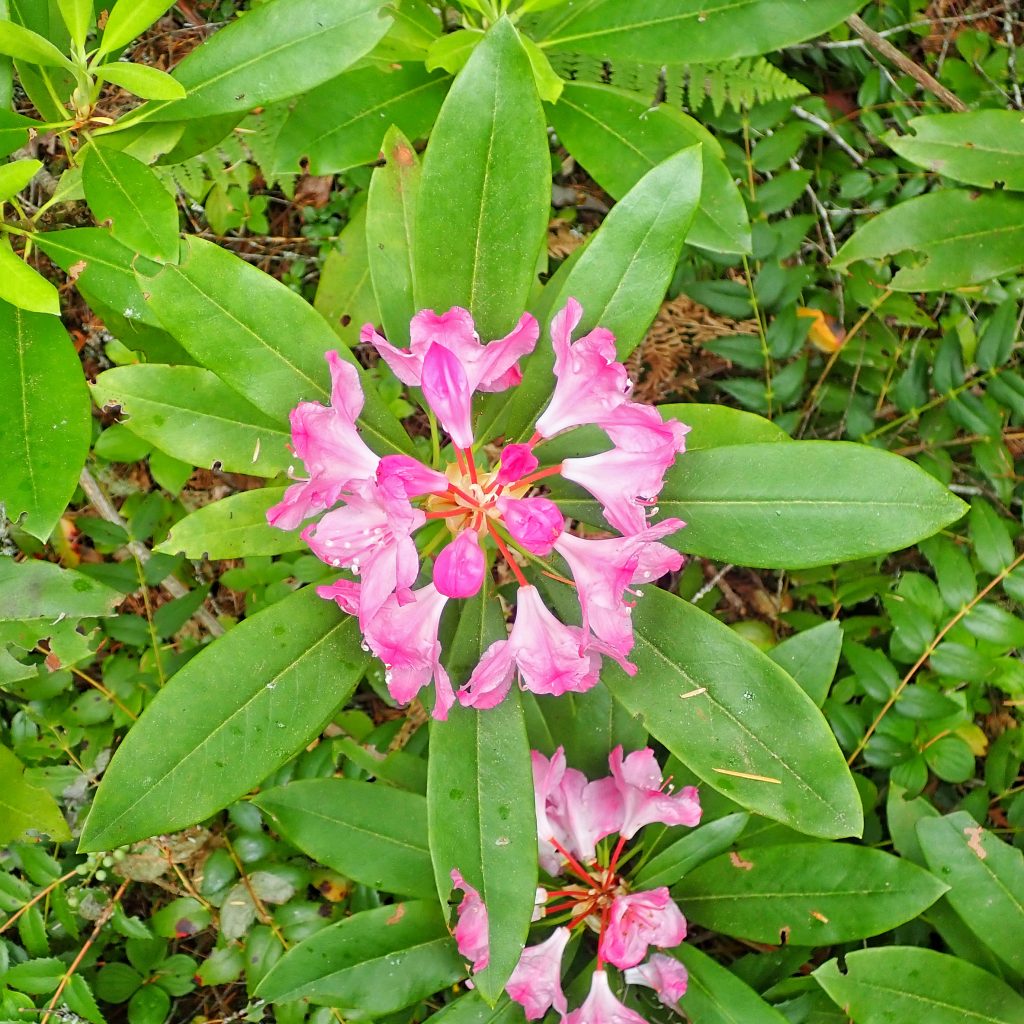
Rhododendrons (and their congeneric cousins azaleas) are widespread, approaching ubiquity, in the cultivated landscapes of our region, although I much prefer them in their natural setting, as were these Pacific Rhododendron along the North Santiam River. And many of them are cultivars of our native Rhododendron macrophyllum, although rhodies and azaleas which originated in many different lands can also be found. But this striking member of the family Ericaceae does so well in our climate that members of its lineages are exceedingly common.
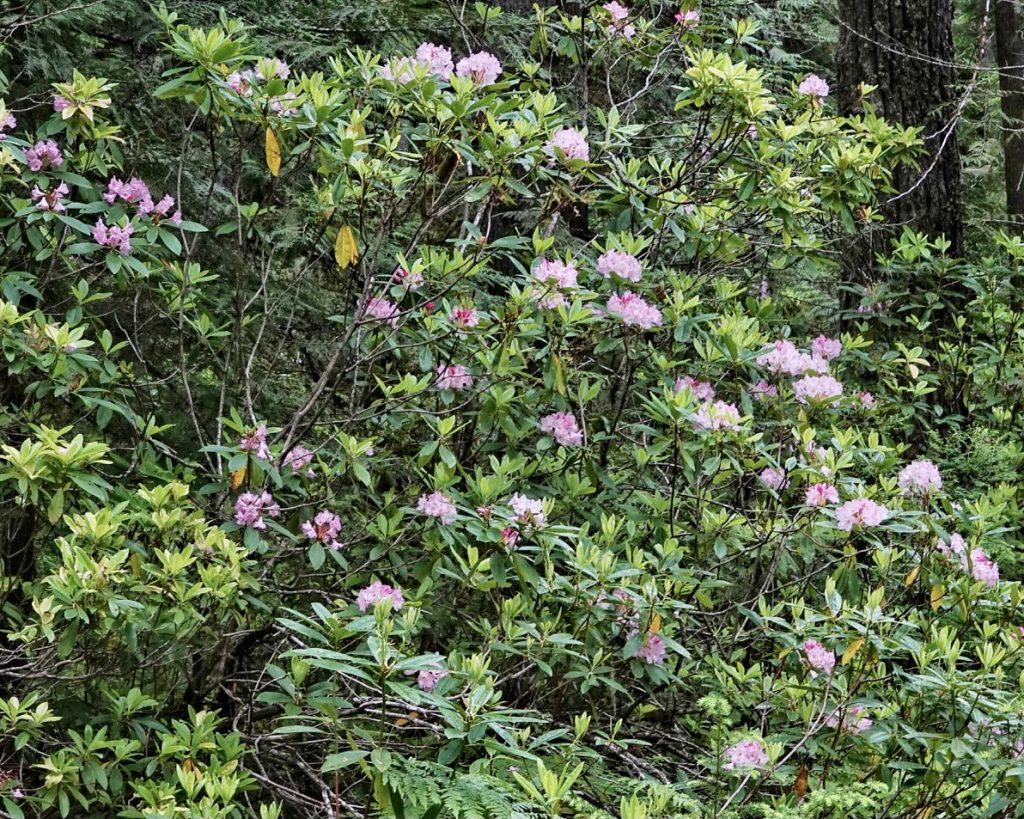
Archivald Menzies ‘discovered’ this species in 1792, whilst serving as surgeon and naturalist aboard the HMS Discovery, during Capt. George Vancouver’s expedition around the world (1791-95). This expedition resulted in the first contact between Europeans and many of the indigenous cultures of the PNW, who, incidentally, had been utilizing Pacific Rhododendron (which the Skokomish called Xawxu’pt) for hundreds of years already.
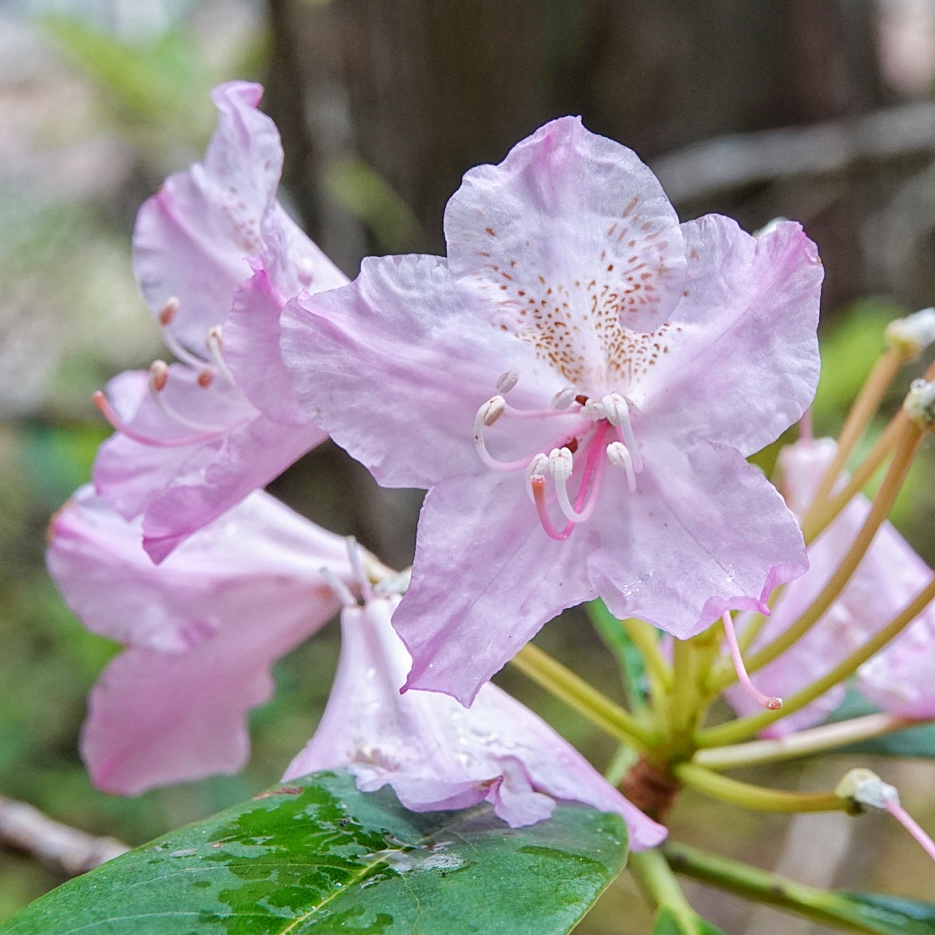
Many of the uses they put it to were ceremonial, such as using it in wreaths while dancing at festivals, and as a ‘luck getter’ in sweat lodges. But they also used the wood for carving household items and other tools, and for building chairs. It was valued as a fire starter because of its high resin content, which allowed it to burn well even when green. And, because of their size and waxy surfaces, leaves and leafy branches were often used to line and cover baskets of food to keep them fresh.
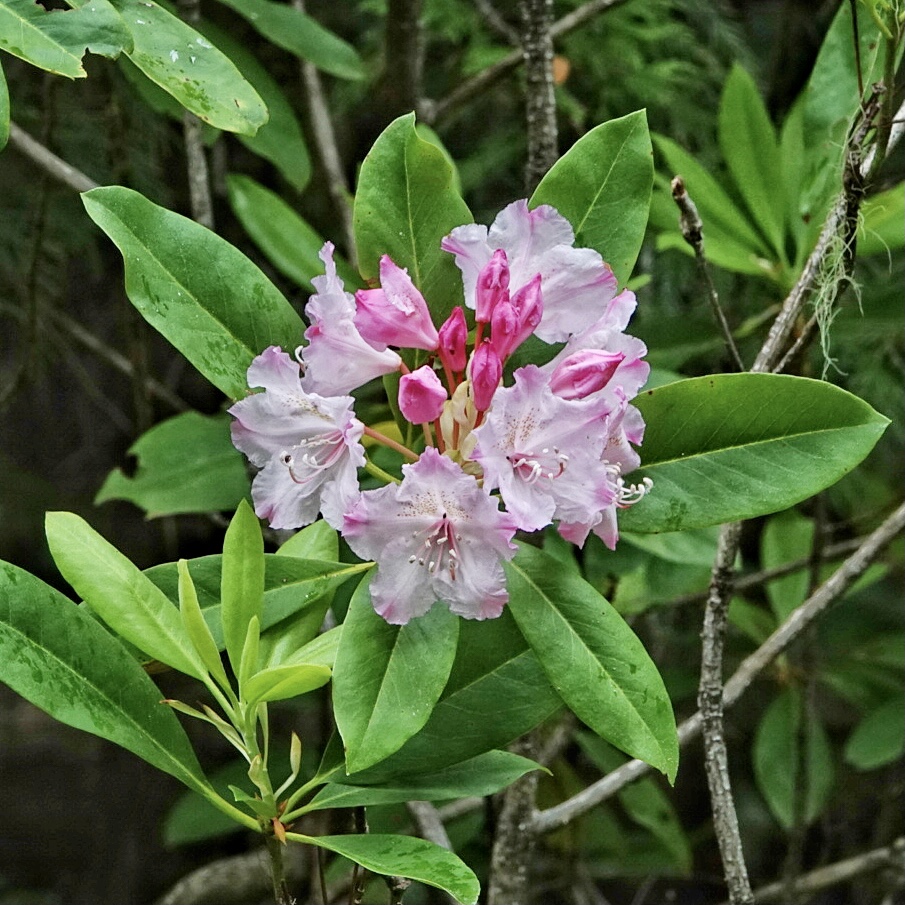
They also used parts of Rhododendron macrophyllum for medicinal purposes. They boiled bark for stomach problems, boiled buds for sore throats and coughs, ate buds for stomach ulcers, made a burn and wound salve by mixing its charcoal with grease, and used chewed buds as a wound poultice. However indiscriminate medicinal use of this plant is not recommended by knowledgeable modern herbalists.
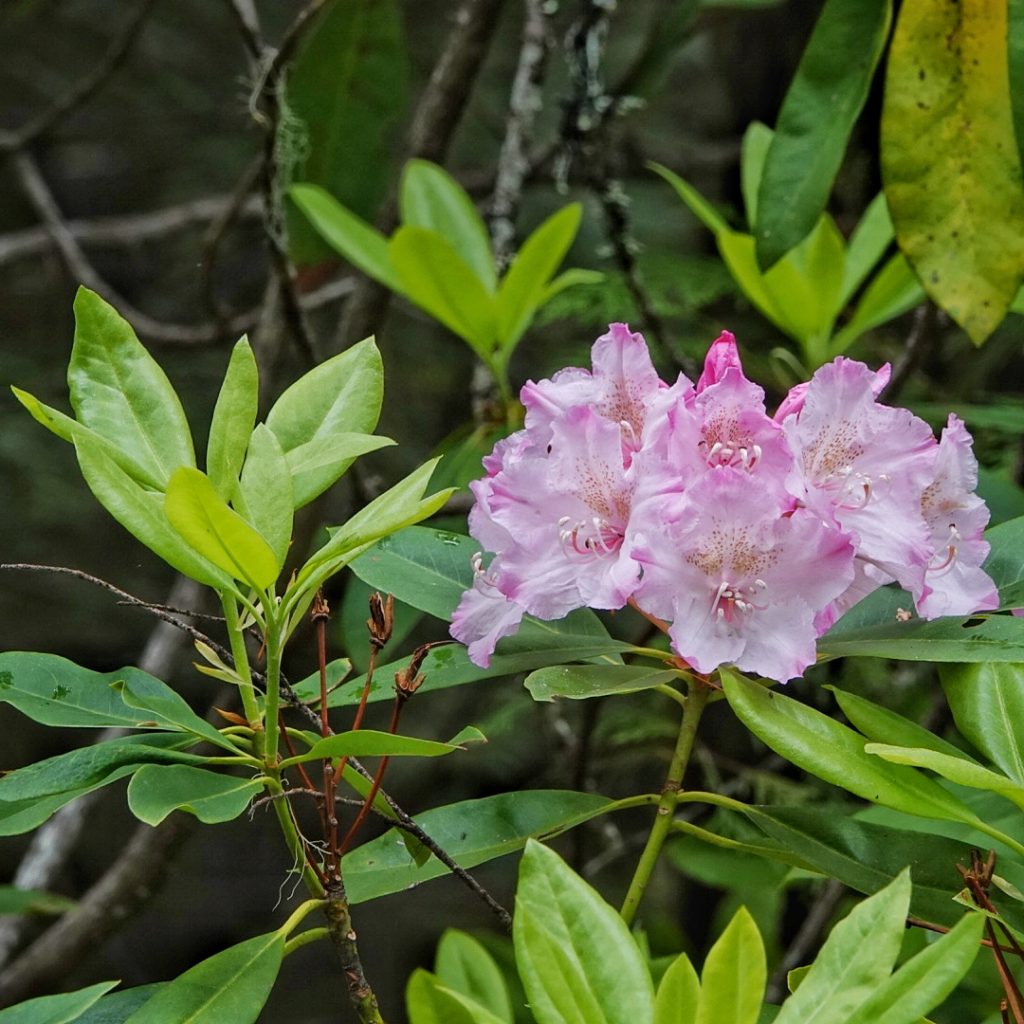
This is because the flowers and buds contain several potent neurotoxins, which can cause severe illness and even death. In fact ‘mad honey’, made from the nectar of Rhododendron luteum, was allegedly used by the Turks 2,000 years ago to poison and defeat the Roman army. On the other hand, when separated from other toxins and administered in safe dosages, some of the phytochemicals in rhododendrons have been found to possess healing qualities, and research is ongoing into potential safe medicinal uses.
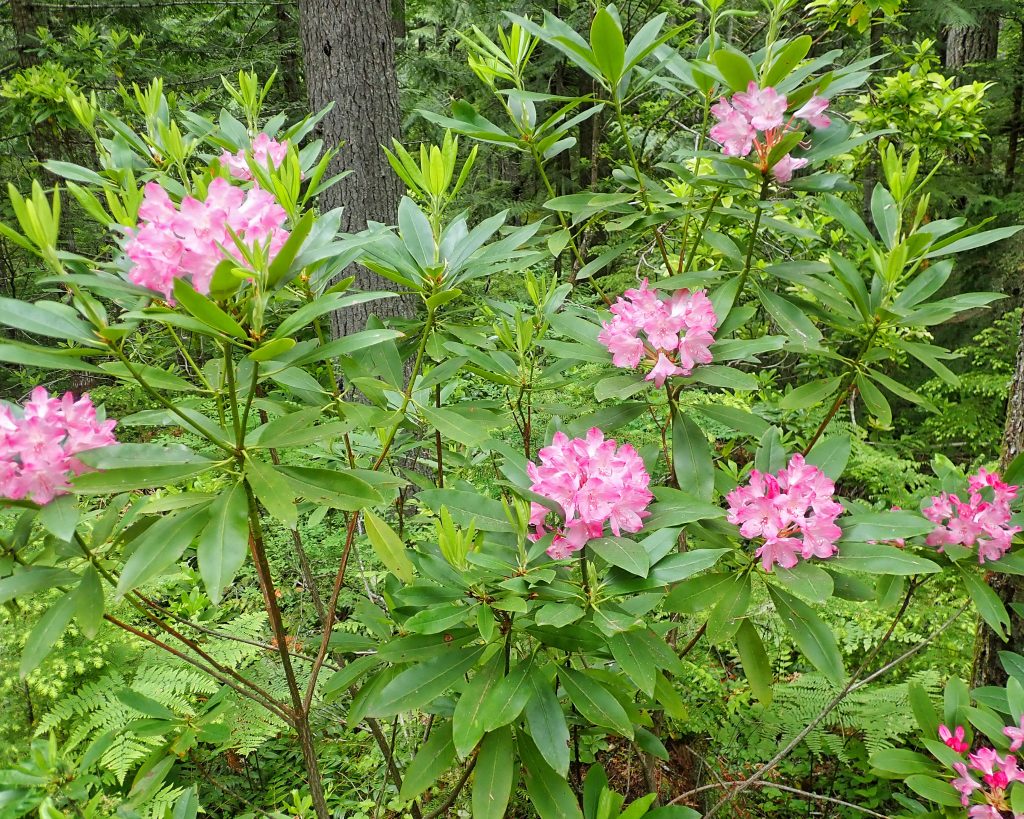
The Pacific Rhododendron is the state flower of Washington. It is interesting to note that when the idea of selecting a state flower was proposed in 1892 they decided to have a vote in which only women were allowed to participate, and Rhododendron macrophyllum won 51% of the vote. An unintended, but long overdue, consequence of that vote was that the women involved took the knowledge and infrastructure they gained setting up that election and parlayed it into a campaign for women’s voting rights, which resulted in women being given the right to vote in Washington in 1910, ten years before they gained that right nationwide.
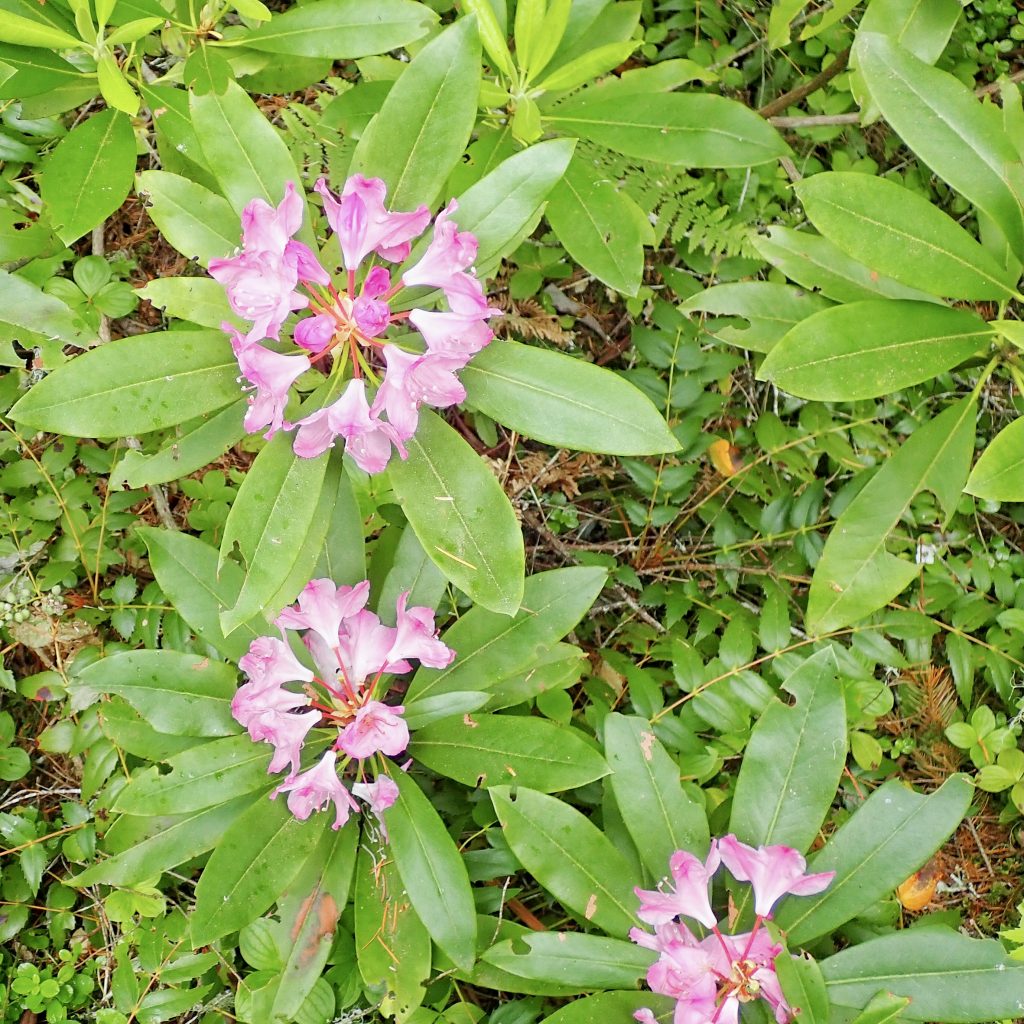
Description-Perennial; large (up to 15’ tall) bushy shrubs or trees, with large (up to 8”x3”) leaves and pink flowers; leaves are evergreen, long ovals that are darker green on top and lighter green below, margins smooth, usually with pointed tips; flowers medium sized (up to 2” wide), may be white through pink to purple, with green to yellow spots on upper lobe.
Similar species-Our other native Rhododendrons all have smaller leaves and white flowers which lack spots on the upper lobe, although R. occidentale has a blotch or stripes on the upper lobe.
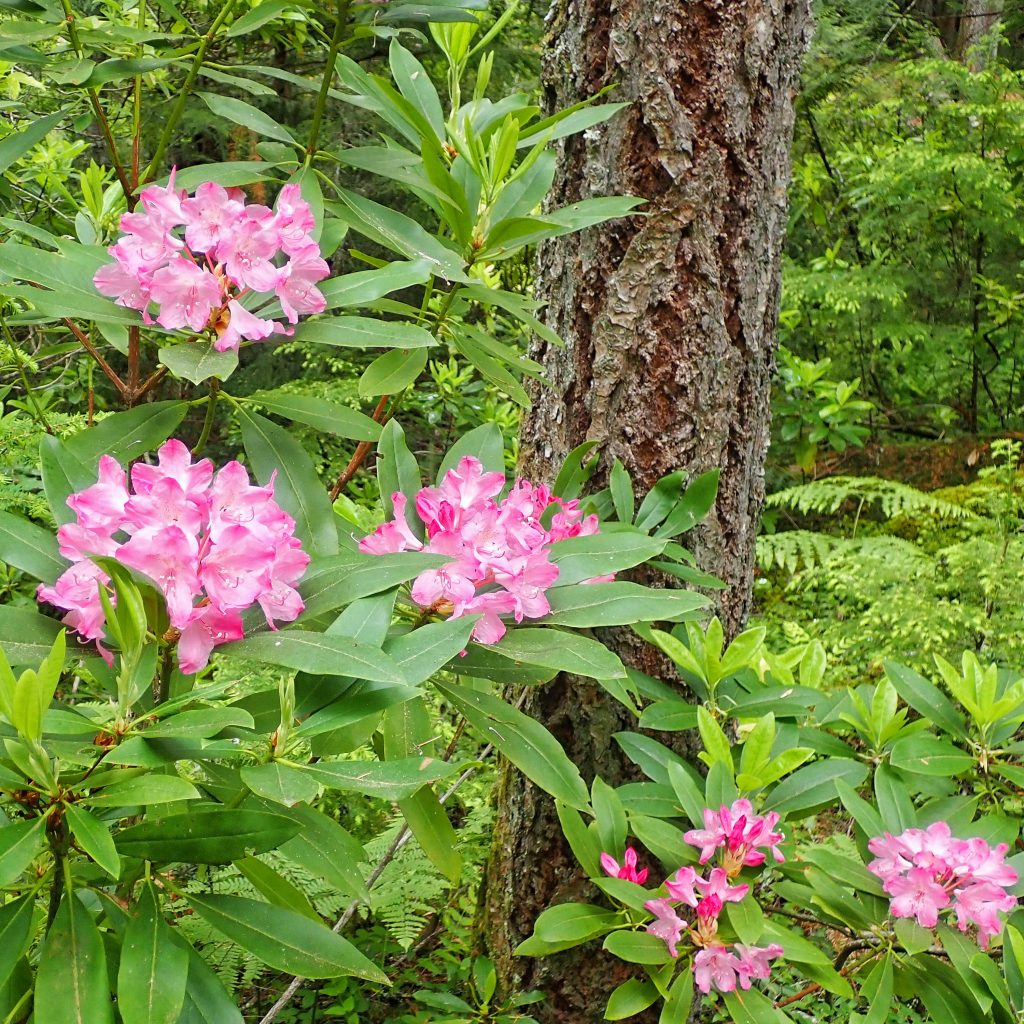
Habitat-Moist to mesic, mature forests and forest edges with mixed sun and shade, up to 5,000’ elevation.
Range-Pacific Coast native; west of the Cascades and nw California, but seemingly absent in Wahkiakum, Cowlitz, Thurston, and Grays Harbor counties in Washington, and Columbia County in Oregon
Reproductive timing-Blooms May to July, depending on elevation.
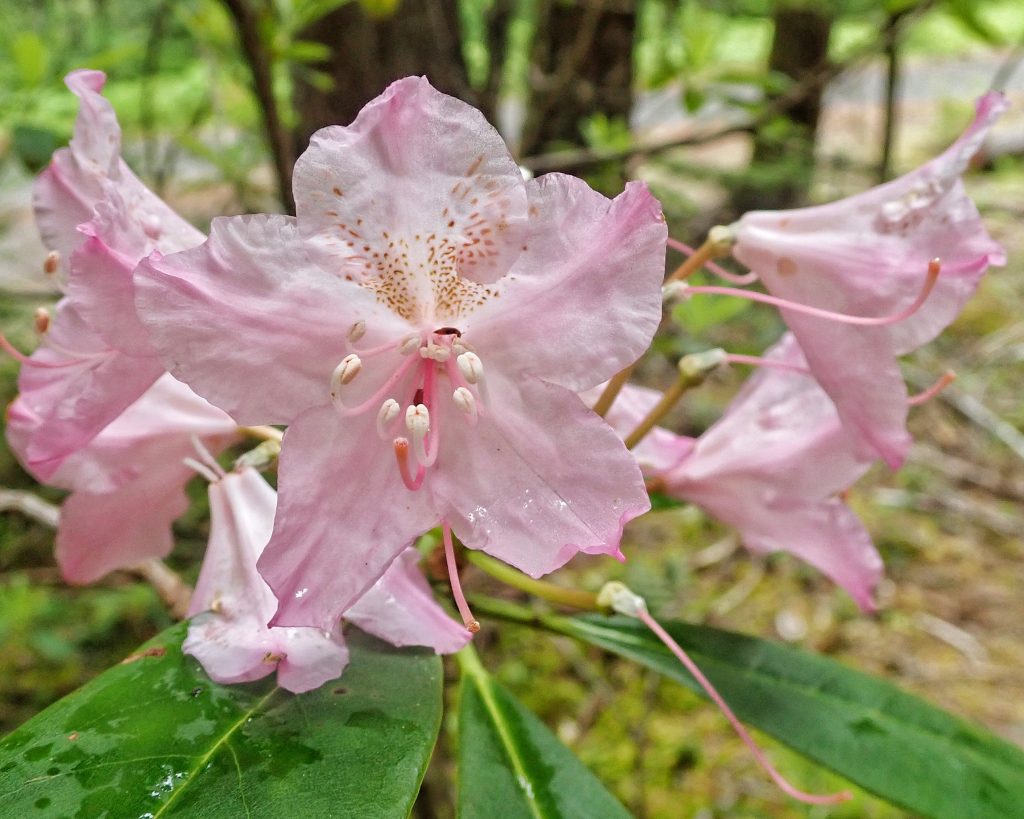
Eaten by-Larval host for the leaf beetle Timarcha intricata, the lace bug Stephanitis rhododendri, and several moths including the Geometrids Platypolia contadina, Dysstroma sobria, Neoalcis californiaria, Synaxis jubararia and several Eupethecia spp., as well as the Noctuids Aseptis binotata, Oligia illocata, and Orthosia transparens. Deer and Aplodontia (Mountain Beaver) browse its leaves.
Etymology of names–Rhododendron is from the Greek words for ‘rose tree’. I think the reference is obvious. The specific epithet macrophyllum is from the Greek words for ‘large leaved’. A usefully descriptive epithet.
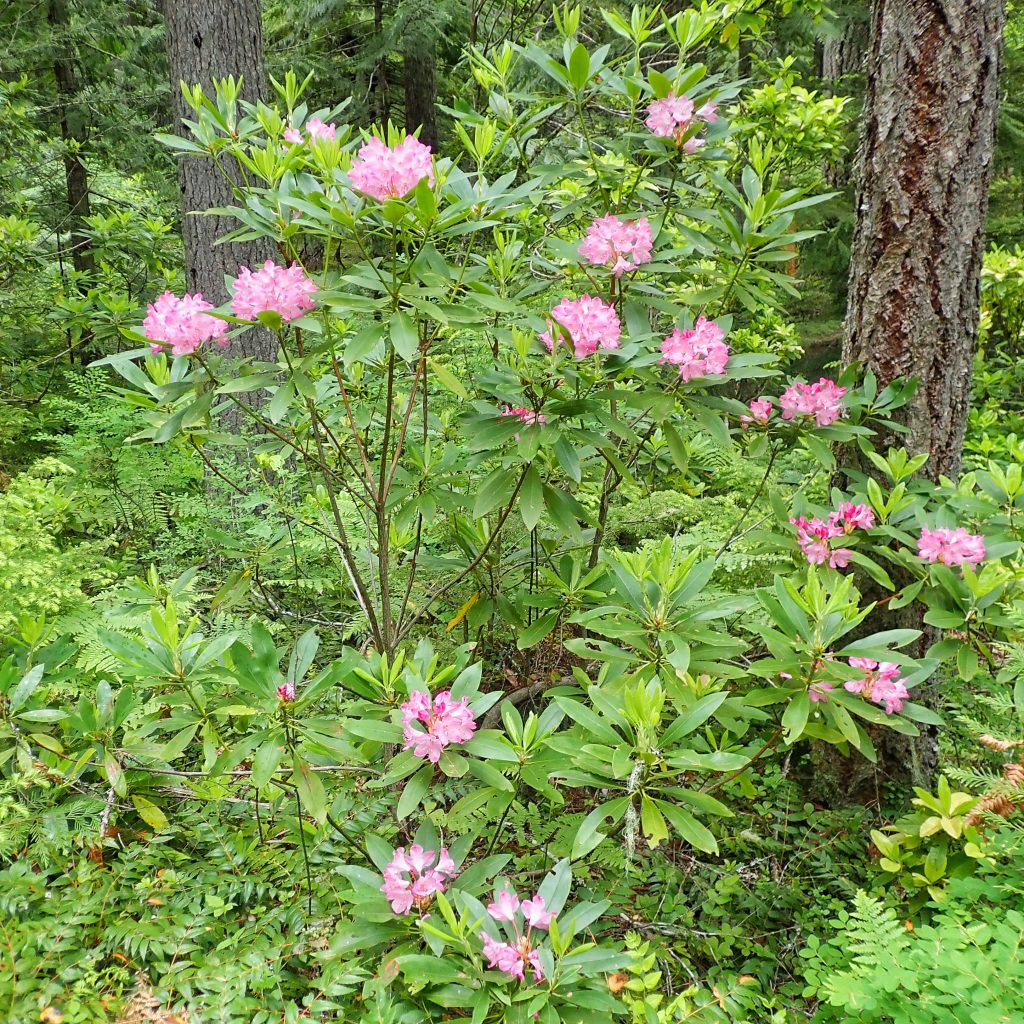
Rhododendron macrophyllum | Pacific Rhododendron | Wildflowers of the Pacific Northwest
OregonFlora Rhododendron macrophyllum
https://ejfood.blogspot.com/2012/12/ethnoecology-blogs-autumn-2012_22.html?m=1
https://www.ptleader.com/stories/queen-of-the-forest-native-rhodies-in-bloom,69267
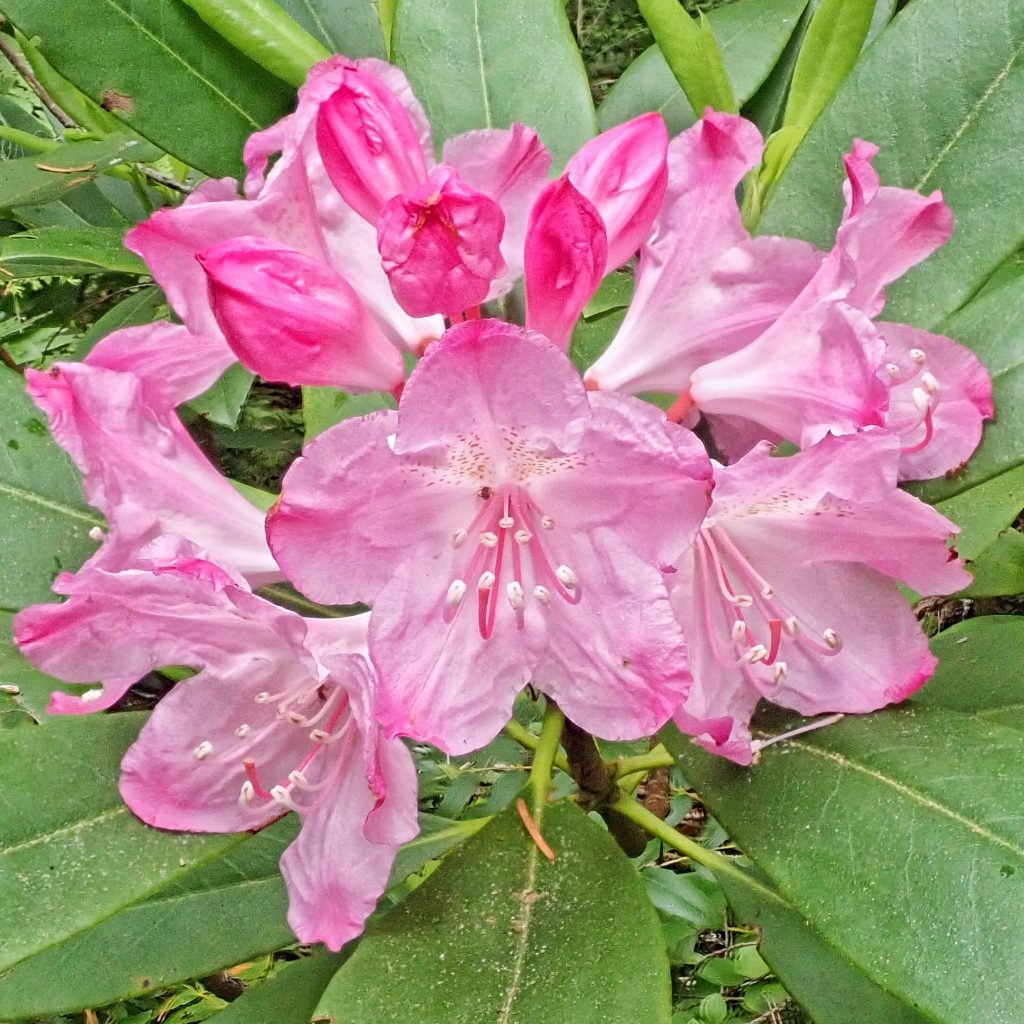
Thanks for the back story:):)
Didn’t know it was the state flower. Really cool that it lead to women in Washington’s right to vote! Thank you ☺️
Thank you for that interesting piece of history! Actually I appreciate all your unique tidbits in your fauna and flora articles. I will never look at pacific roadies the same! So cool. A very influential plant there. Also good to know about its high resin content in these fire active times
Thank you for your appreciation!